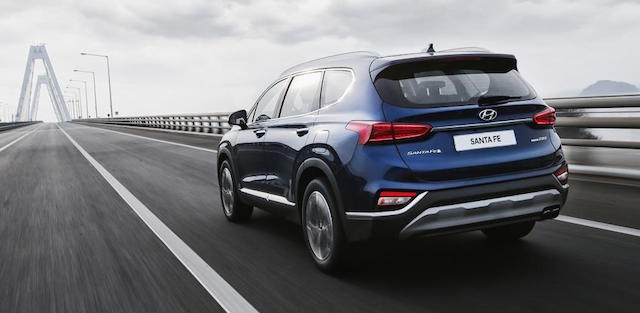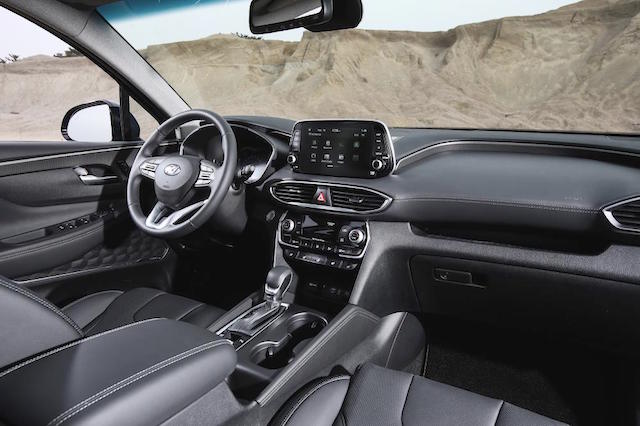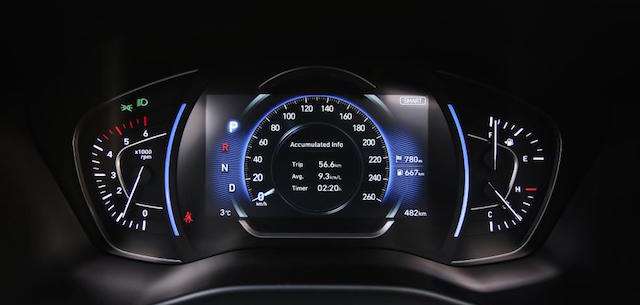
Pictured here is the fourth-generation Hyundai Santa Fe SUV, due to go on sale in New Zealand this year and with a safety system tailored in the interests of cyclists.
‘Safety exit assist’ (SEA) is bundled in Hyundai’s ‘SmartSense’ system, which includes the familiar autonomous emergency braking (AEB) with pedestrian detection, radar cruise control and lane assist systems.
SEA is an updated version of rear cross-traffic alert. Apart from automatically bringing the vehicle to a halt if it detects an obstacle while reversing, it also prevents occupants from opening the doors if something is approaching from behind, like an unobserved cyclist.
Among the other Santa Fe firsts is an adjustable head-up display and wireless inductive charging for cellphones. The first Hyundai to get wireless charging was Hyundai’s smallest SUV, the Kona, which went on sale here last year.
What the new Santa Fe will bring to New Zealand in terms of connectivity is not yet known, although Apple Car Play and Android Auto infotainment systems are a given.
The main engine listed by the company for the Asia-Pacific market is a Euro6-rated 2.2-litre turbodiesel generating 144kW/436Nm. An eight-speed automatic with torque converter replaces the current six-speeder.
The ‘Theta II’ petrol engine currently available in the outgoing Santa Fe 7S and 7S Elite is expected to also be mated to the eight-speed ‘box. The 2.4-litre delivers 136kW/241Nm.
The seven-seater is a tad bigger inside and out than the current Santa Fe and is based on a revised version of the platform that underpins the Kia Sorento SUV and Carnival people-mover, from Hyundai’s affiliate company.
Santa Fe is 4770mm long, 1890mm wide, and 1680mm high, dimensions almost mirroring Sorento’s 4780mm/1890mm/1685mm. In comparison, the Toyota Highlander is 4890mm/1925mm/1730mm.
Hyundai says the new SUV is lighter but considerably stronger, with 57 per cent of high strength steel in its architecture, the most of any Hyundai.
It’s roomier too, second row passengers getting 38mm more legroom and 22mm more headroom. A new one-touch slide and fold system on the second row allows easier access to the third row, where headroom is up 22mm.
Another bonus for occupants in the rear, says Hyundai, is better visibility from a bigger, redesigned rear window. Driver and passenger up front haven’t been ignored – they get 10-way adjustable seats.
Hyundai’s on-demand HTRAC all-wheel drive (AWD) system controls torque distribution and braking to each wheel and, like many rival SUVs with AWD, can be programmed to suit road or off-road surfaces.
A digital gauge in the instrument cluster shows where the AWD torque is being distributed. In Sport mode, for instance, 50 per cent of engine torque goes to the rear wheels. In Comfort mode it’s 35 per cent, while in Eco the car is front-drive only. If in an instance the road surface becomes slippery, HTRAC automatically sends torque to all four wheels.
Hyundai tunes the suspension of all its New Zealand and Australia passenger vehicles to suit the varied road conditions in each country. Camouflaged Santa Fe models have been doing suspension tests in Australia for some time.
An option in the new model is self-levelling suspension. It continuously adjusts the shock absorbers to keep the ride height level, regardless of the load.
The Santa Fe is expected to go on sale in NZ after July. The current third-generation Santa Fe arrived in NZ in 2013. At its peak it was selling around 2000 units annually.




